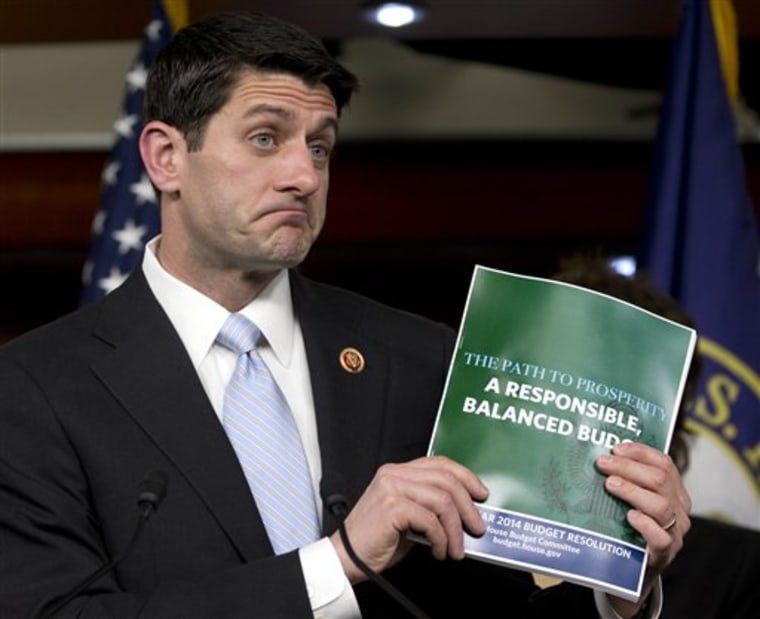The Supplemental Nutrition Assistance Program (SNAP, or food stamps) is facing cuts on at least two different fronts over the next year. The new Ryan budget, introduced last Monday, includes $135 billion cuts to the program over the next ten years. But even if Ryan's proposed cuts do not make it into a final budget deal, SNAP funding will automatically decline in early 2014, thanks to the expiration of a stimulus package provision which increased food stamp money.
Once that provision expires, the CBO estimates, the average food stamp recipient will go from receiving about $134 a month to $130. Furthermore, "CBO expects spending to fall by about 9% between 2014 and 2022." The Ryan plan, in contrast, would cut the program by a little over 17% over roughly the same time frame.
As msnbc has previously reported, even current food stamp spending is not enough to support the needs of SNAP recipients. The current average payment of about $134 per month leaves food stamp recipients to make do on less than $4.50 a day. According to Timothy Smeeding, director of University Madison-Wisconsin’s Institute for Research on Poverty, nearly all of that money gets used up in the first half of the month, after which "business picks up at food pantries and soup kitchens.”
Nonetheless, as reporters Jake Blumgart and Jordan Weissman have noted, some media outlets (like The Wall Street Journal and Fox Business) and conservative politicians (like Paul Ryan and Alabama Senator Jeff Sessions) have sought to portray food stamp spending as lavish or indulgent. Now there's a new permutation of that argument.
In a March 18 piece, Washington Post columnist Charles Lane asks: "Why should food stamps pay for junk food?" Though Lane says he "blame the consumers, in the sense that their choices are entirely permissible under SNAP’s rules," he also calls for new regulations which would prevent food stamp recipients from spending their SNAP benefits on soda and other unhealthy food items.
"But even if SNAP paid only for healthy stuff, recipients would still be free to use their own cash for other products," he writes. "The point is to increase the amount of real nutrition per taxpayer dollar."
A food stamp recipient might reply: What cash? Lane makes the error of assuming that a SNAP recipient's unhealthy diet is entirely a matter of personal choice, rather than economic necessity. But as Boston College sociologist Lisa Dodson told msnbc, “meager” food stamp funding compels recipients to spend what few benefits they have on cheap, unhealthy food items—which in turn contributes to an obesity epidemic which breaks down along class lines.
“Cheap foods tend to be foods that make you obese,” said Dodson. “Cheap calories tend to be the ones that are high in fat, and we know now that obesity is becoming the major public health problem.”
If Lane wants the poor to eat healthier, restricting their access to food even further is unlikely to do the trick. Even if they cannot purchase soda with their benefits, food stamp recipients will be hard-pressed to afford a diet of fresh fruit and vegetables. In fact, it might do more good to increase SNAP benefits such that recipients can afford healthy food, rather than further constraining their options.
